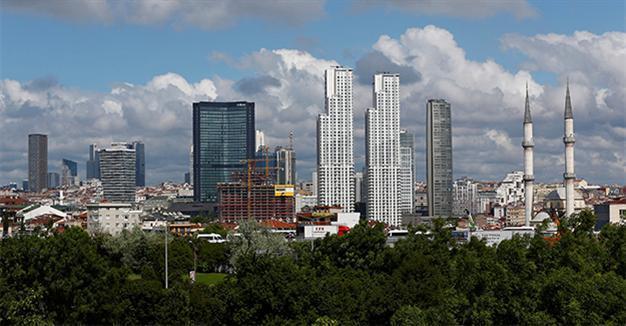World Bank cuts 2016 global growth forecast on weak demand, keeps Turkey forecast unchanged
WASHINGTON

REUTERS photo
The World Bank has said that it was downgrading its 2016 global growth forecast to 2.4 percent from the 2.9 percent pace projected in January, in a written statement on June 7.
“The move is due to sluggish growth in advanced economies, stubbornly low commodity prices, weak global trade and diminishing capital flows,” it said.
The bank did not make any revision on its forecast about Turkey’s 2016 economic growth, keeping it at 3.5 percent. While the World Bank also kept its forecast at 3.5 percent for 2017, it revised its forecast by 0.2 percentage points for 2018 to 3.6 percent, although it mentioned concerns over terror attacks and regional risks.
According to the latest update of its Global Economic Prospects report, commodity-exporting emerging market and developing economies have struggled to adapt to lower prices for oil and other key commodities, which accounts for half of the downward revision, said the bank.
Growth in these economies is projected to advance at a meager 0.4 percent pace this year, a downward revision of 1.2 percentage points from the January outlook.
“This sluggish growth underscores why it’s critically important for countries to pursue policies that will boost economic growth and improve the lives of those living in extreme poverty,” said World Bank Group President Jim Yong Kim.
“Economic growth remains the most important driver of poverty reduction, and that’s why we’re very concerned that growth is slowing sharply in commodity-exporting developing countries due to depressed commodity prices,” he added.
Commodity-importing emerging markets and developing economies have been more resilient than exporters, although the benefits of lower prices for energy and other commodities have been slow to materialize, according to the World Bank.
These economies are forecasted to expand at a 5.8 percent rate in 2016, down modestly from the 5.9 percent pace estimated for 2015, as low energy prices and the modest recovery in advanced economies support economic activity.
Deeper recession signals
Among major emerging market economies, China is forecast to grow at 6.7 percent in 2016 after 6.9 percent last year. India’s robust economic expansion is expected to hold steady at 7.6 percent, while Brazil and Russia are projected to remain in deeper recessions than forecast in January. South Africa is forecast to grow at a 0.6 percent rate in 2016, 0.8 of a percentage point more slowly than the January forecast.
A significant increase in private sector credit, fueled by an era of low interest rates and, more recently, rising financing needs, raise potential risks for several emerging market and developing economies, said the report.
“As advanced economies struggle to gain traction, most economies in South and East Asia are growing solidly, as are commodity-importing emerging economies around the world,” said World Bank Chief Economist and Senior Vice President Kaushik Basu.
“However, one development that bears caution is the rapid rise of private debt in several emerging and developing economies. In the wake of a borrowing boom, it is not uncommon to find non-performing bank loans, as a share of gross loans, to quadruple,” added Basu.
In an environment of anemic growth, the global economy faces pronounced risks, including a further slowdown in major emerging markets, sharp changes in financial market sentiment, stagnation in advanced economies, a longer-than-expected period of low commodity prices, geopolitical risks in different parts of the world, and concerns about the effectiveness of monetary policy in spurring stronger growth, underlined the report.
The report introduced a tool to quantify risks to the global outlook and finds that they are now more tilted to the downside than in January.
“Flagging growth prospects in emerging markets and developing economies would slow or even reverse their progress in catching up to income levels of advanced economies,” said Development Economic Prospects Group Director Ayhan Köse.
“However, some commodity-importing emerging and developing economies have been able to register steady or accelerating growth over the last three years,” added Köse.
